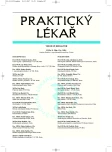Functional systems of the human brain
Funkční systémy lidského mozku
Výsledky soudobé neurovědy ovlivňují výzkum umělé inteligence, robotiky, psychologii, lingvistiku, ekonomii, právo i filozofii. Kognitivní neurověda se zabývá poznávacími funkcemi mozku lidí a zvířat, afektivní neurověda zkoumá jejich emoce. Vývoj kognitivní i afektivní neurovědy je podmíněn vývojem moderních funkčních zobrazovacích metod. Výchozím pojmem je funkční systém mozku. Základními vlastnostmi funkčních systémů mozku jsou organizace, integrace, hierarchizace, anatomická vazba na vymezené oblasti mozku a paralelně distribuované zpracovávání informací. Podkladem stavby a činnosti funkčních systémů mozku jsou neuronální sítě, které se vyvíjejí fylogeneticky i ontogeneticky, fungují zpětnovazebně „odspodu vzhůru" i „shora dolů", kromě toho i „laterálně". Extrinsické neuronální sítě odpovídají na signály zevního světa, intrinsické neuronální sítě reagují na signály jiných neuronálních sítí. Mozek je organizován do soustav dynamických sítí, jejichž činnost je často protichůdná. Stavbu a činnost neuronálních sítí mozku lidí i zvířat mohou nezvratně ovlivnit nepříznivé zevní vlivy, například deprivace
Klíčová slova:
neurověda kognitivní a afektivní, funkční systémy mozku, neuronální sítě.
Authors:
F. Koukolík
Authors‘ workplace:
Fakultní Thomayerova nemocnice s poliklinikou, Praha
; Primář: MUDr. František Koukolík, DrSc.
; Oddělení patologie a molekulární medicíny Národní referenční laboratoř prionových chorob
Published in:
Prakt. Lék. 2007; 87(12): 699-704
Category:
Reviews
Overview
Cognitive neuroscience investigates the cognitive functions of human and animal brains. Affective neuroscience examines the brain’s emotivity. Contemporary neuroscience influences research into artificial intelligence, robotics, psychology, linguistics, economy, law and philosophy. The basic concept of both of these neuroscientific branches is the functional brain system. The basic properties of the functional brain systems are organization, integration, hierarchy, anatomical relationship to demarcated brain regions and concurrently distributed processing of information. The advancement of cognitive and affective neuroscience is reliant upon up-to-date imaging methods. The development of neuronal networks of the human brain is ontogenetic and phylogenetic. Neuronal networks operate „down-top“, „top-down“ and „laterally“. Extrinsic neuronal networks react to signals from the external world. Intrinsic neuronal networks react to signals from other networks. The brain is organized in sets of dynamic networks whose functions are frequently antagonistic. The architecture and functions of the neuronal networks of human and animal brains may be affected by unfavourable influence, e.g.deprivation.
Key words:
cognitive and affective neuroscience, functional brain system, neuronal network.
Labels
General practitioner for children and adolescents General practitioner for adultsArticle was published in
General Practitioner

2007 Issue 12
- Metamizole vs. Tramadol in Postoperative Analgesia
- Metamizole at a Glance and in Practice – Effective Non-Opioid Analgesic for All Ages
- Memantine in Dementia Therapy – Current Findings and Possible Future Applications
- Memantine Eases Daily Life for Patients and Caregivers
- What Effect Can Be Expected from Limosilactobacillus reuteri in Mucositis and Peri-Implantitis?
Most read in this issue
- Functional systems of the human brain
- Laparoscopic cholecystectomy for cholecystolithiasis and its complications. Retrospective 1-year analysis of 411 patients
- Intestinal tapeworms. Do they still exist? Are they still able to surprise us?
- Typical and atypical forms of Celiac disease in adults
